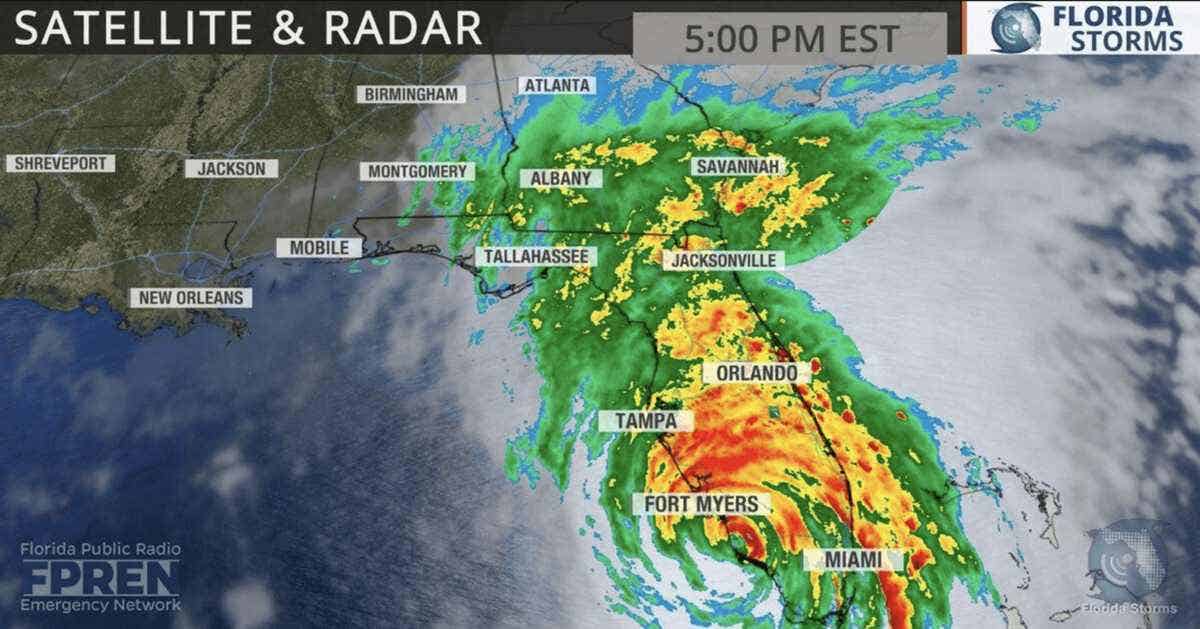Move fast & fix things: Building a hurricane response in 12 hrs
If tech isn’t at the heart of your hurricane response plan, you’re doing it wrong

As with any home insurance provider, the most important interaction we have with our customers is when their house gets damaged and they need help getting it repaired. And hurricanes like Irma, the largest storm ever recorded in the Atlantic, are the ultimate test because they create severe damage for a lot of customers all at once.
Our carrier partners quickly realized that using telephones or websites for dealing with claims just wasn’t good enough, particularly in a disaster situation. They needed a new strategy for handling the damage to our clients’ homes.
This is the story of how the carriers we work with built the best hurricane response process that made our customers’ lives easier in a time of stress and how they built it in about 12 hours.
Communicating with customers in a disaster
After a hurricane, there are often no roads, no phones, no internet, no power. Getting in touch is a challenge.
Given the situation our partners decided to build a claims process on top of SMS. They built an integration from their CRM system into a text communication platform and sent a text message to every customer to see if they were okay and to ask if their house had sustained damage.
The message was super simple:
"Sam, this is Kin Insurance. How is everything? You can text us at this number to start the claims process. This way you don’t have to wait on hold."
They then routed the text responses into our systems and platforms. In less than 30 minutes, we received an SMS reply from more than half of the policyholders.
Customers told us what they needed
It’s hard to overstate just how amazing this was. It went from “jeez, I wonder how bad it was” to having instant visibility into who was fine and who was affected in about half an hour. They quickly triaged customers into “fine”, “has some damage, need to file a claim” and “home uninhabitable.”
Most importantly, it opened up a line of communication with customers.
Many of them replied back saying they were fine and were thankful for the check in:
Phew
Many customers had questions about their coverage, so having the customer text responses tied into the policy administration system was useful because it meant that customer service representatives could quickly reply with a text message explaining the coverage to the customer.
For example, this customer didn’t know if her fence was covered (it was), her deductible ($2,000), and if she should file a claim (probably not, unless there was more damage to her home).
For customers who had more significant damage, the description and photos sent by the customer were pushed directly into the claims systems so they could prioritize the assignment of claims adjusters and increase the adjusters’ efficiency.
Texting is efficient. Who knew? (Everyone.)
Overall, handling claims via text improved efficiency by around 20x for our carrier partners. For us, it established a very high service level for our customers with nearly instantaneous responses. They responded when they were able and sent in pictures of the damage to their property en masse. Many also indicated that they weren’t sure of the conditions of their roof.
Send in the drones!
From the reports coming in via SMS, the variables collected on each house during underwriting, and the weather data about the storm itself, the claims team had a pretty good idea of which houses were most at risk. So they had a drone visit each one. In some cases they were able to identify damage on top of the house that was not easy to see.
The drones were often able to provide aerial images of damage to the customers’ houses before they had even returned home, since many people left the state for safety purposes before the storm hit. It also removed some of the burden from homeowners that would have trouble reaching their roof to document the damage themselves.
Having good video and photo records very quickly after the event helps to ensure claims are settled quickly and accurately. And this is ultimately what the whole process is for — helping customers get compensated for damage to their home in a timely fashion, and doing it without adding to their worries after a natural disaster.
Related Posts:Keep exploring
Displaying post 1 / 3